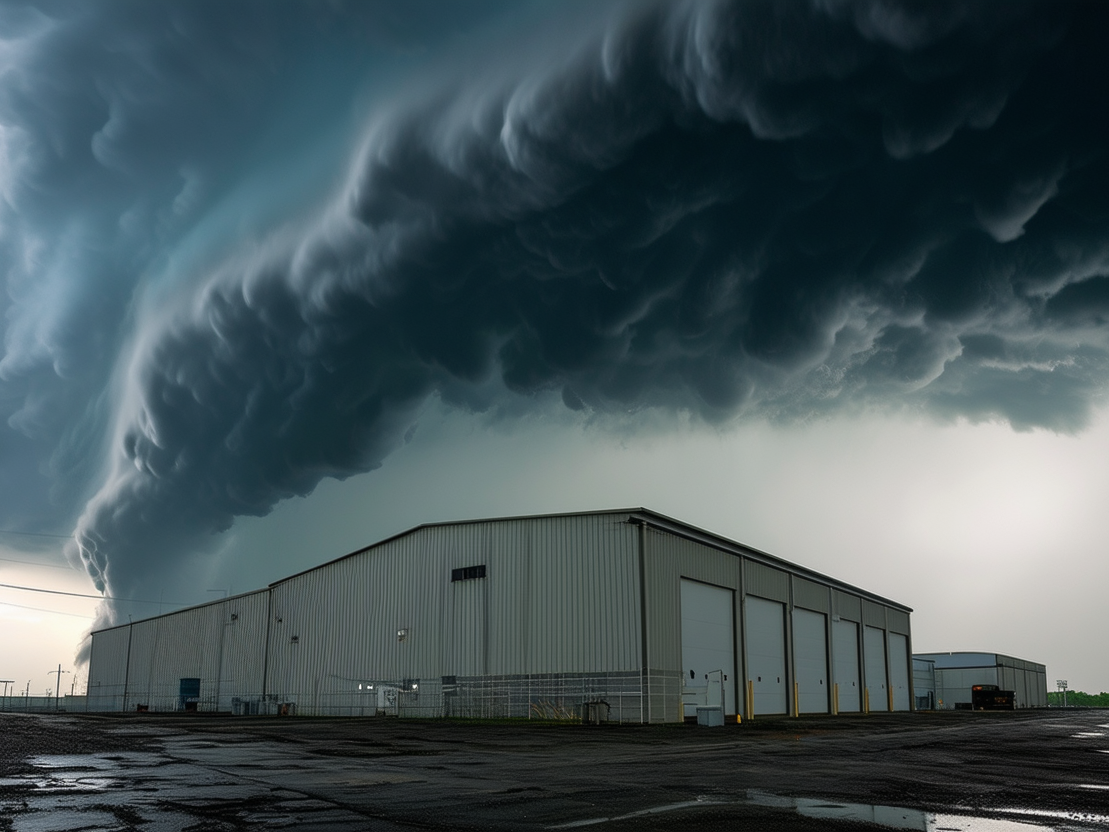Sponsored: Liberty Mutual Insurance
Using Data to Get Through Hail and Back
4,600 hailstorms have rained down on the U.S. as of the end of July according to the National Oceanic and Atmospheric Administration. And these storms have left damage behind, cracking unprotected skylights, damaging exterior siding, dimpling rooftops and destroying HVAC systems.
While storm frequency is almost on par with last year’s 5,400, the rest of the picture isn’t quite the same. For example, the hail zone seems to be shifting south. San Antonio, Texas, a “moderate” hazard hail zone area, typically sees four or five hail storms a year, on average. Year to date, more than 30 storms have been reported. Overall, Texas has suffered nearly 20 percent of all hail storms this year.
Liberty Mutual’s Ralph Tiede discusses the risk hail poses to large commercial property owners.
The resulting damage is different too, with air conditioning (AC) units accounting for more than a third of the insurance industry’s losses, a greater proportion than in previous years. “In some cases, we’ve seen properties that sustained no roof damage but had heavily damaged AC systems. This may be a result of smaller hail stone size coupled with high winds,” noted Ralph Tiede, Vice President of Commercial Insurance and Manager of Property Risk Engineering at Liberty Mutual.
Despite the shifting trends, however, these losses are largely preventable if commercial property owners understand their exposures and take steps to mitigate them. By partnering with the right insurer, a company can gain access to the industry-leading resources and expertise to make it happen.
Understanding the Risk through Data
A property owner might know that his property is located in an area prone to hail, but could underestimate the extent of damage a storm could cause. Exposed skylights, solar panels, satellite dishes and other roof-mounted equipment can translate to serious losses.
Three trends that have emerged this hail season.
This is where Liberty Mutual’s property loss control engineers offer critical guidance for customers with large property exposures.
“Our property loss control engineers go out and inspect locations to develop loss estimates,” said Tiede. “They’re looking at the age and condition of the roof, the material it’s made of, and whether equipment is exposed or if there are adequate safeguards in place.”
Liberty Mutual can combine this detail with the hail data it has collected for more than 14 years and use this extensive library to help customers understand their exposures. The company’s proprietary hail tool looks at customer-specific factors, such as roof type, age, condition and geocodes, to better identify potential losses from hail. The tool provides a more detailed view of hail exposure on a micro level, as opposed to more traditional macro views based on zip codes.
“This way, we’re not just looking at a location’s exposure, we’re looking at an account’s cumulative hail exposure and providing a better understanding of where the risk is concentrated,” Tiede said.
Having a good understanding of a company’s specific exposure helps the broker, buyer, and insurer develop an effective insurance program. “Two customers may be in the same area, but if one’s building has a hail resistant roof, protected skylights, and hail guards for HVAC equipment and the other’s has unprotected sky lights and no hail guards or screens on rooftop equipment, they are going to have different levels of exposure. In both scenarios, we can design an insurance program that fits the customer’s situation and helps control the total cost of property risk,” said Brent Chambers, Underwriting Consultant for National Insurance Property at Liberty Mutual.
A Liberty Mutual property loss control engineer consults with the customer on ways to reduce or mitigate the exposure from hail so that the customer can make an informed decision as to where to deploy capital. “It’s not just about protecting a building’s roof and rooftop equipment. Roof damage can lead to extensive water damage inside a building and in some cases disrupt service, both of which can be costly for a business. By focusing on locations with the most exposure, a risk manager is better able to mitigate future losses,” said Tiede.
Actions commercial property owners can take to mitigate the risk of hail-related damage.
Liberty Mutual property loss control engineers also provide recommendations specific to each location. “We know that hail guards work, so we encourage clients to use those to protect HVAC equipment,” said Ronnie Smith, Senior Account Engineer for National Insurance Property at Liberty Mutual. “Condenser coils in air conditioning systems are fragile and easily damaged, and units don’t necessarily come with built-in protection. It’s important for property owners to take this step proactively to prevent a loss.”
The average cost to fix a condenser coil is $500, but replacing a coil can run at least $500 per ton of cooling, a measurement of air conditioning capacity that refers to the amount of heat needed to melt a ton of ice over a 24-hour period. As one ton of cooling typically covers about 250 square feet of interior space, replacement costs can quickly add up.
Replacing an entire AC unit can run more than $1,000 per ton of cooling. In a 250,000 square foot property, the replacement could easily reach $1 million. Given the increase in hail-related AC damage this year, these are numbers worth knowing.
Other risk mitigation recommendations include regular roof maintenance, such as inspections and repairs to small damages like blisters and installing protective screens over skylights.
“If a roof needs replacing, we also suggest using materials that have been tested and approved by an independent certification laboratory and are durable enough to fit the location’s exposures,” Tiede said. “The last thing a commercial property owner wants is to replace a roof again six months after it’s installed. Experience has shown that ballasted-type roofs are the most resistant to hail damage.”
Using Data to Develop Solutions
When a property owner has an understanding of the size of its exposure and potential losses, it is better able to work with its agent or broker and insurer to develop an insurance program to manage and mitigate potential risks.
“The data and advice we provide help clients focus on the largest risks and better mitigate that exposure,” Smith said. “The more data you have, the more you can understand your risk on a granular level and manage it.”
This data-driven approach to preparedness makes Liberty particularly well-suited to serve large commercial properties with multiple locations in high risk areas.
Prices for roof and air conditioning repairs and replacements have risen over last year, Tiede said, and are likely to grow more expensive as older equipment becomes obsolete. Property owners will be forced to buy newer, pricier replacements than perhaps they had originally planned for.
And if this year’s storm trends are any indication, hail is sometimes an unpredictable foe.
Amidst these shifting trends, the value of an insurer’s expertise in identifying, mitigating and managing hail exposure will be immeasurable to large commercial property owners.
For more information about Liberty Mutual’s commercial property coverage, visit https://business.libertymutualgroup.com/business-insurance.
This article was produced by the R&I Brand Studio, a unit of the advertising department of Risk & Insurance, in collaboration with Liberty Mutual Insurance. The editorial staff of Risk & Insurance had no role in its preparation.








